How to make the perfect Irish coffee
The ideal way to celebrate St Patrick's Day or an abomination best left in the Irish theme pub? Do you use espresso or filter, plain old whiskey or added liqueur – and just how do you get the cream to float on top?
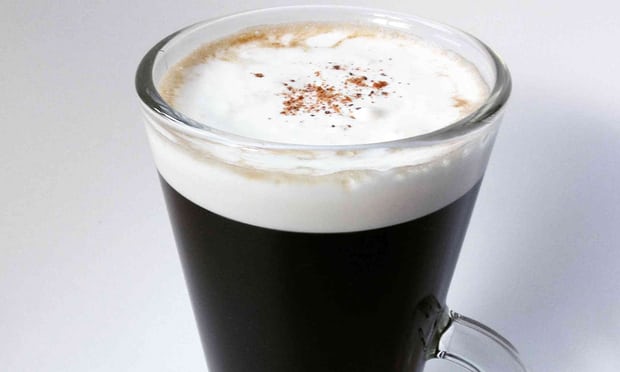
The perfect Irish coffee. Photograph: Felicity Cloake/Guardian
Irish coffee is one of those irredeemably naff drinks that, done well (or consumed late enough in the evening), are actually really, really nice. (See also, the pina colada, the frozen daiquiri, and almost anything containing blue curaçao.)
Its poor reputation stems from the fact that it is often a far cry from that rich blend of nutty, slightly bitter coffee, caramelly sugar and fiery whiskey that makes such a pleasing contrast to the cool, loosely whipped layer of cream on top. Mediocre coffee, cheap whiskey and bland, spray-can cream are hardly going to have the leprechauns beating your door down for a nightcap.
The Irish coffee is relatively unusual among cocktails in having a clear and undisputed provenance: it was created in the winter of 1943 by Joe Sheridan, chef at Foynes Port in Limerick, for cold, weary passengers from a transatlantic flying boat forced to return to Ireland because of bad weather. The drink became an airport speciality and, after the war, was taken back to the States by a journalist from the San Francisco Chronicle, who persuaded his local bar, the Buena Vista Cafe, to recreate it for him. Today they claim to serve as many as 2,000 Irish coffees on busy days.
As with so many classic drinks, however, it has suffered numerous indignities over the years, not least the sickly green creme de menthe often drizzled over the top in its adopted homeland as a misguided nod to its Irish heritage. If you're celebrating St Patrick's Day next Tuesday, please, I beg you, show it a bit more respect.
Coffee
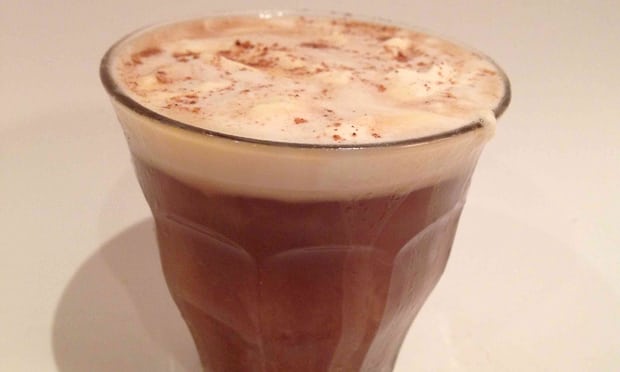
Dead Rabbit's Irish coffee. Photograph: Felicity Cloake/Guardian
As a fellow tea-drinking nation, I shudder to think what the coffee might have been like on the west coast of Ireland in the 1940s, but I think it is fairly safe to assume it wasn't the espresso favoured by recipes including that from Good Food Ireland and Dublin's Vintage Cocktail Club, which makes it more like a punchy martini than a digestif. Belfast native Jack McGarry of New York's Dead Rabbit bar opts for filter coffee, in the belief that "espresso or Americano coffee overpowers the smooth and mellow Irish whiskey", and I'm inclined to agree with him. It should be a generous enough drink to linger over, and an espresso just doesn't fit the bill.
Sugar
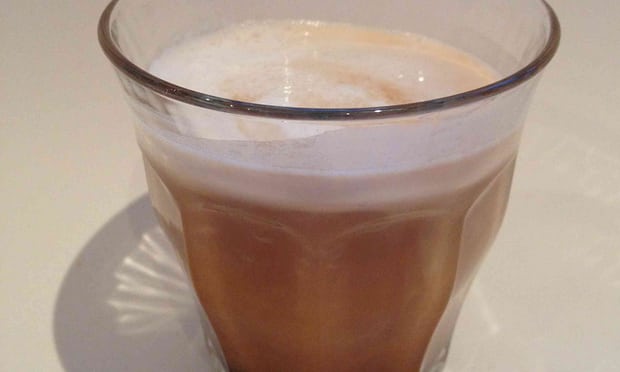
Delicious magazine's Irish coffee. Photograph: Felicity Cloake/Guardian
Whether you take sugar in your coffee or not (I don't, but coffee snobs can do one as far as I'm concerned), it is essential here, and not just for flavour. Without it, your cream won't float properly, so please, don't be tempted to cut back. The original is said to have used brown sugar, an approach still favoured by most recipes. Good Food Ireland and chef Neven Maguire go for the soft brown variety, while Delicious magazine writers use dark muscovado. Dead Rabbit makes a brown sugar syrup, and the Vintage Cocktail Club opt for molasses instead. Both are on the right track, given a liquid dissolves more easily in the drink, but I find the flavour of the molasses rather too bitter with the coffee. Maguire, who says he has "perfected this recipe over time and believes it really is the best ever Irish coffee", melts his sugar in a pan. I can't see the advantage of this rather fiddly step unless it is to avoid diluting the drink further, which seems rather pernickety when such small amounts of water are involved.
Booze
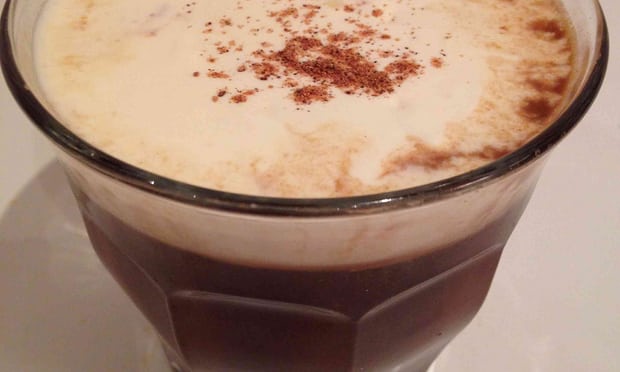
Good Food Ireland's Irish coffee. Photograph: Felicity Cloake/Guardian
Maguire's approach to the alcohol content of the coffee is also intriguing; while everyone else stirs in whiskey alone, he adds whiskey to the sugar pan, flambés it (thus burning the alcohol off), then stirs in Baileys and Kahlua to make a boozy syrup. This takes me a few goes to perfect, as the sugar has a tendency to burn and the Baileys to separate, but in the end I just about get it – only to discover that, though it tastes pretty damn delicious, I miss the punch of the whiskey. There is no doubt that the other two flavours work well, but they're very much optional extras, whereas the whiskey should be the star attraction.
Cream
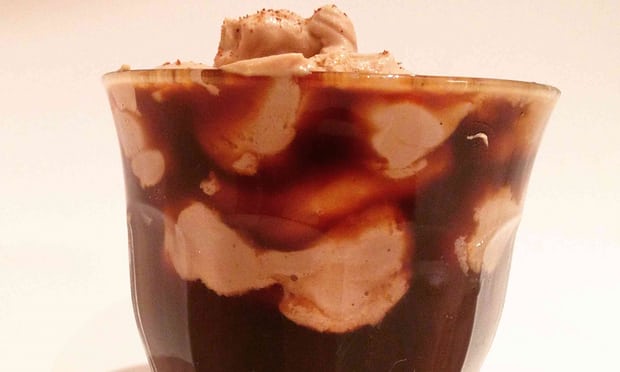
Vintage Cocktail Club's Irish coffee. Photograph: Felicity Cloake/Guardian
The trickiest bit of making an Irish coffee is getting the cream to float on top; even the most cursory glance at the photos will prove it took me a good while to master this technique. The secret, I think, is to ensure the coffee is very hot and the cream very cold – and, most importantly, it isn't whipped too thickly, which is easy to do with such a small amount. Dead Rabbit's "ropey consistency" is a useful, if somewhat unappetising, phrase to bear in mind. Most recipes, with the exception of Good Food Ireland's pouring variety, call for heavy cream, the American equivalent of our double, though with a slightly lower fat content. You could use whipping cream if you prefer, but don't be tempted to go for single, which fails miserably in the floating department.
The Vintage Cocktail Club whips its with a Guinness and malt syrup reduction, which, though interesting on its own, means you lose the pleasant contrast between the sweet, boozy coffee and the rich, bland cream. Dead Rabbit suggests adding a little Kahlua or Baileys as an optional extra, and Delicious stirs in Baileys and vanilla seeds, while Tom Stafford, the winner of a recent competition to find Dublin's best Irish coffee, infuses his with orange zest. I'm surprised how well the citrussy flavour works (and somewhat less surprised by how much I like the two liqueurs), but in the end I decide to keep mine simple. Feel free to play around with this bit if you like – although please, avoid anything green.
The popular garnish of a sprinkling of nutmeg not only looks pretty, but tastes pretty good too. If you can get it in the shape of a shamrock, all the better.
The perfect Irish coffee
- (Makes 1)
- 50ml cold double or whipping cream
- 2 tbsp soft brown muscovado
- 50ml whiskey, preferably Irish
- 150ml-200ml freshly brewed coffee
- Nutmeg, to top
Fill a heatproof glass with hot water and leave to stand. Whip the cream until the bubbles disappear and it has just started to thicken and form ribbons underneath the whisk; it is better to err on the side of too thin at this point. Put back in the fridge.
Dissolve the sugar in two tablespoons of hot water in a small pan and bring to the boil. It should go syrupy almost immediately, unless you're scaling up for a crowd.
Take the sugar off the heat and stir in the whiskey. Empty the glass and pour the sweetened whiskey into the bottom, then stir in the coffee. Take the cream out of the fridge, whisk once, then pour it on over the back of a spoon (this helps to stop it sinking). Grate a little nutmeg over the top and serve immediately.
Irish coffee: a fine creation, or something best left in dark, sticky confines of the Irish theme pub? And, like them or loathe them, what other Irish food and drink do you recommend for those celebrating on Tuesday?